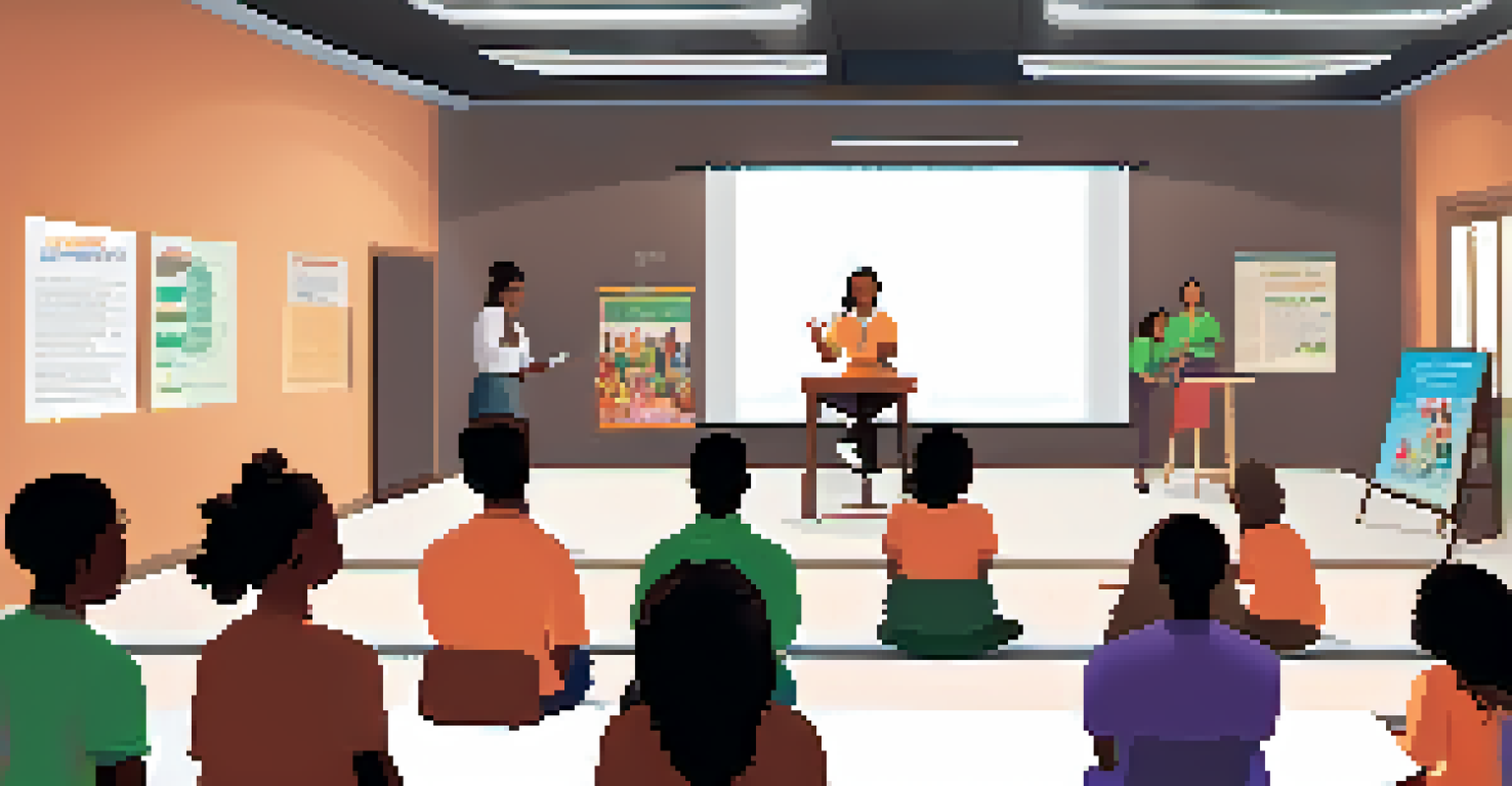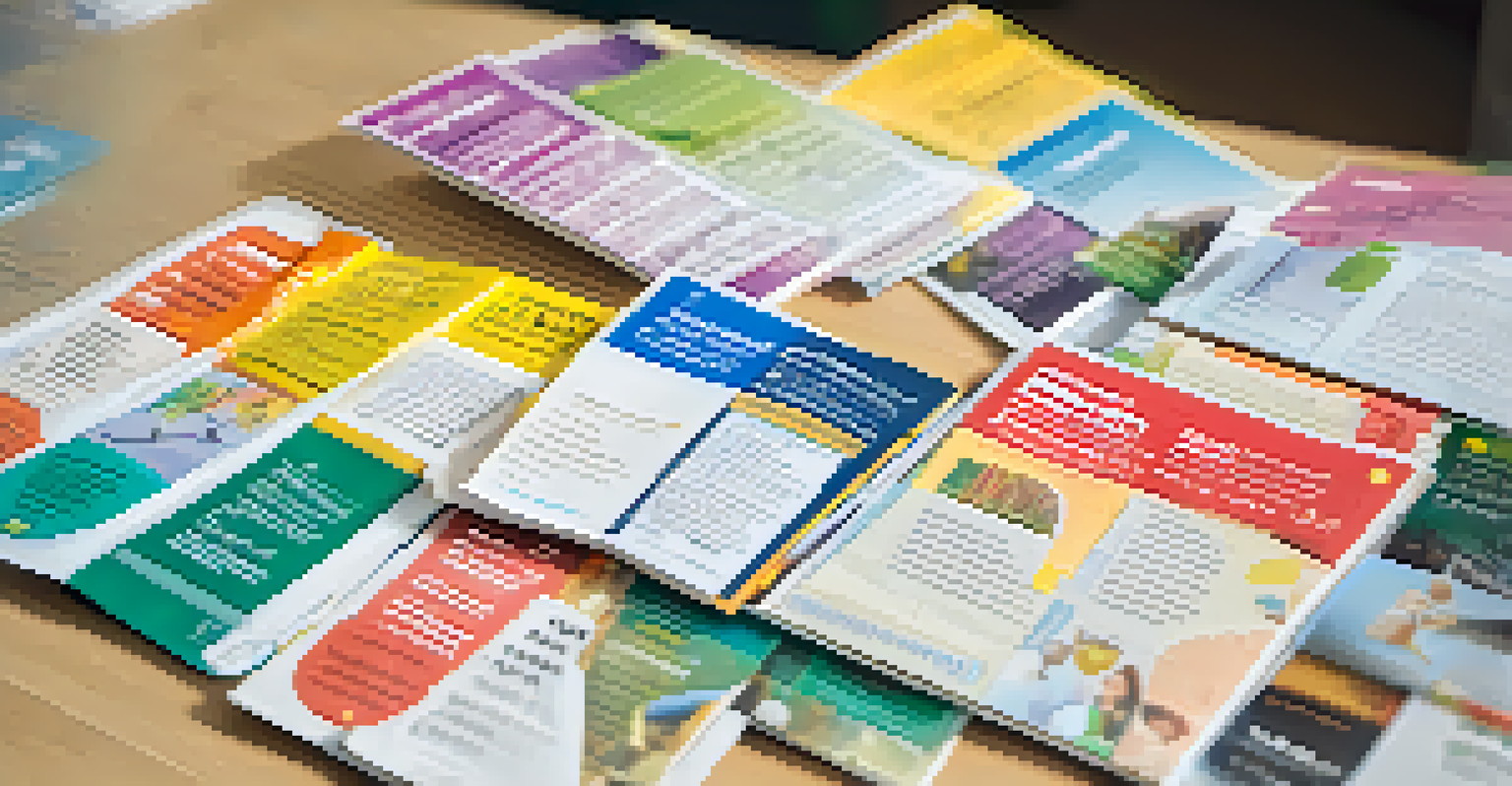Barriers to Effective Public Health Education in Communities

Understanding Public Health Education and Its Importance
Public health education aims to inform communities about health issues and prevention strategies. It plays a vital role in improving overall health outcomes and empowering individuals to make informed decisions. When people understand health risks and preventive measures, they are more likely to adopt healthier behaviors, ultimately leading to a healthier society.
Public health education is a powerful tool in empowering communities and improving health outcomes.
Effective public health education can reduce healthcare costs, as prevention is often cheaper than treatment. For example, educating communities about the importance of vaccinations can lead to higher immunization rates, reducing outbreaks of preventable diseases. This not only saves money but also saves lives.
However, despite its importance, public health education faces several barriers that can limit its effectiveness. Identifying and addressing these barriers is crucial for creating healthier communities and ensuring that everyone has access to vital health information.
Cultural Sensitivity: A Key Barrier to Communication
One significant barrier to effective public health education is the lack of cultural sensitivity. Different communities have unique beliefs, practices, and values that influence how they receive health information. If public health messages do not resonate with a community's culture, they are less likely to be embraced.

For instance, using medical jargon or unfamiliar terms can alienate individuals who may not have a strong educational background. By tailoring messages to be culturally relevant and easily understandable, health educators can foster better communication and connection with the audience.
Importance of Public Health Education
Public health education empowers communities to understand health risks and adopt preventive measures, ultimately improving overall health outcomes.
Moreover, engaging community leaders and stakeholders in the educational process can enhance cultural sensitivity. When community members feel their voices are heard, they are more likely to participate and share information with others.
Limited Access to Resources and Technology
Access to resources, including educational materials and technology, is another barrier that affects public health education. In many underserved communities, individuals may lack access to the internet or smartphones, making it challenging to receive vital health information. This digital divide can exacerbate health disparities and limit educational outreach.
The greatest weapon against stress is our ability to choose one thought over another.
Additionally, printed materials may be unavailable or not distributed widely enough to reach all community members. Without the necessary resources, public health initiatives can fall short, leaving many people uninformed about important health topics.
To overcome this barrier, public health organizations can adopt multi-faceted approaches, such as leveraging community centers, libraries, and local events to disseminate information. By meeting people where they are, we can ensure that everyone has access to essential health education.
Language Barriers: Hindering Effective Communication
Language barriers can significantly hinder effective public health education. In diverse communities, individuals may speak a range of languages, making it challenging to deliver health messages in a way that everyone can understand. Without clear communication, important health information may be lost in translation.
For example, health pamphlets or educational materials that are only available in English may not reach non-English speaking populations. This can lead to misconceptions or a lack of awareness about critical health issues.
Cultural Sensitivity Enhances Outreach
Tailoring health messages to resonate with diverse cultural beliefs fosters better communication and encourages community participation.
To address language barriers, public health educators can utilize bilingual staff, translate materials, and engage interpreters during community outreach events. By ensuring that health information is accessible in multiple languages, we can enhance understanding and improve health outcomes.
Misinformation: The Challenge of False Health Narratives
In the age of social media, misinformation spreads quickly and can significantly undermine public health education efforts. False narratives or misleading health information can create confusion and distrust within communities, making it difficult for accurate information to gain traction. This is particularly concerning during health crises, such as pandemics.
For instance, during the COVID-19 pandemic, misinformation regarding vaccines and treatments proliferated, leading to hesitancy and reluctance to seek medical care. Combatting misinformation requires a proactive approach to educate communities about credible sources and fact-checking strategies.
Public health organizations must prioritize clear, consistent messaging to counteract misinformation. Collaborating with trusted community figures and influencers can also help disseminate accurate information and build trust in public health initiatives.
Community Engagement: A Critical Component for Success
Community engagement is essential for effective public health education. When individuals feel involved in the decision-making process, they are more likely to embrace health initiatives and share information with others. Active participation helps foster a sense of ownership and accountability within the community.
For example, involving local residents in designing public health campaigns ensures that the messages resonate with the audience. By incorporating community feedback, health educators can tailor strategies that address specific needs and concerns.
Funding Gaps Limit Health Initiatives
Inadequate funding for public health programs hampers the ability to effectively disseminate vital health information, especially in underserved communities.
Moreover, building relationships with community organizations can enhance outreach efforts. By collaborating with local groups, public health initiatives can reach a broader audience and create a supportive environment for health education.
Funding Limitations: A Barrier to Effective Programs
Funding limitations pose a significant barrier to implementing effective public health education programs. Many organizations struggle to secure adequate resources to develop, launch, and sustain initiatives. Without sufficient funding, even the best ideas can fall flat, leaving communities without essential health information.
Moreover, competition for grants and funding can be fierce, leading to disparities in resource allocation. Often, underserved communities receive less support, further widening health disparities and access to education.

Addressing funding limitations requires advocacy for increased investment in public health education. By highlighting the long-term benefits of preventive health measures, stakeholders can work together to secure necessary funding and improve health outcomes for all.